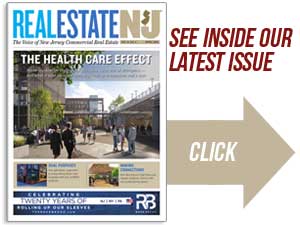By Michael G. McGuinness
Jersey is looking better all the time — especially the suburbs. That’s my conclusion after reading Rutgers University’s latest powerfully informative regional report, “Urbs,” “Burbs,” and the Immigration Locomotive (February 2020), a must-read for state and local public officials. The report provides an impressive amount of detail and analysis on economic, demographic and market trends which can help public officials plan for the future in ways that may help regenerate our suburbs and the overall state economy. This article focuses on some of the demographic resets covered in the report.
 Perhaps the most powerful force contributing to New Jersey’s population growth, which is critical to the state’s future, is international immigrants. In the roughly eight years from April 2010 to July 2018, our state welcomed nearly 273,000 such immigrants. Shockingly (LOL), in that same timeframe, we lost more than 356,000 New Jerseyans who moved to states with a lower cost of living. During the same period, our natural growth rate (births minus deaths) accounted for 230,000 people. Just do the math and you’ll see why the Rutgers report concludes that “the region’s attractiveness as an immigration destination will be a factor determining its future economic competitiveness.” As the report states, “Without the international migration, our region would suffer a demographic catastrophe due to the virtual domestic population hemorrhage — a vast exodus of regional residents moving to the rest of the country.”
Perhaps the most powerful force contributing to New Jersey’s population growth, which is critical to the state’s future, is international immigrants. In the roughly eight years from April 2010 to July 2018, our state welcomed nearly 273,000 such immigrants. Shockingly (LOL), in that same timeframe, we lost more than 356,000 New Jerseyans who moved to states with a lower cost of living. During the same period, our natural growth rate (births minus deaths) accounted for 230,000 people. Just do the math and you’ll see why the Rutgers report concludes that “the region’s attractiveness as an immigration destination will be a factor determining its future economic competitiveness.” As the report states, “Without the international migration, our region would suffer a demographic catastrophe due to the virtual domestic population hemorrhage — a vast exodus of regional residents moving to the rest of the country.”
Nowhere is the international immigrant influx more apparent than in Hudson, Middlesex and Essex counties. Bergen, Union, Passaic and Mercer counties are also significant destinations for this demographic. Look no further than the hundreds of thousands of South Asians (such as Indians, Pakistanis and Bangladeshis) who have settled in Middlesex and Mercer counties. A notable attraction for many of these people is the Hindu temple in Robbinsville, known as BAPS Shri Swaminarayan Mandir. Each week, thousands of worshippers and tourists visit this masterpiece of exquisite Indian design and workmanship. The multi-acre site also features educational facilities, a store and a restaurant. Similarly, the 100-plus yeshivas in Lakewood, Ocean County, are another example of a destination that draws thousands from the Orthodox Jewish community.
Another emerging trend is the reversal of the earlier (pre-2016) “burbs to urbs metropolitan inversion.” From 2010 to 2016, the five boroughs of New York City and the New Jersey counties of Hudson, Essex and Union dominated growth in the surrounding 35-county metropolitan region. Population in the urban core suddenly slipped into decline post-2016. It seems that the very success of the urban core cities is now a barrier to both entry and retention of the younger workforce, retiring baby boomers and empty-nesters, given the dramatic rise in housing and livability costs. This flight from the urban core is also being fueled by lifecycle decisions to locate to less dense areas with good schools for couples starting families.
Let’s not forget about the mobility constraints stemming from urban transportation infrastructure shortfalls and disinvestment (such as stalling of the Gateway Tunnel project due to a lack of federal funding and approvals, and continual snags with NJ Transit operations) that have caused many workers and businesses to stay on the west side of the Hudson River. Is it really worth the time, dollars and stress to subject yourself to long commutes that are anything but reliable and predictable?
Another far less dramatic population shift could pick up steam over the next few decades due to rising sea levels resulting from climate change. Coastal communities and those with tidal waterways exist in 14 out of New Jersey’s 21 counties. Many of these towns are already seeing a significant increase in the number of street closings and neighborhood flooding with a simple high tide (especially with a full moon). A recent business stakeholder meeting with the New Jersey Department of Environmental Protection Commissioner Catherine McCabe focused on the department’s work on climate resilience, which shows high confidence in an 8-plus-inch rise in sea level over the next 30 years. This projection is based on data from the November 2019 report by the New Jersey Science and Technical Advisory Panel (STAP) on Sea-Level Rise and Coastal Storms, conducted by Rutgers University. Given these findings, Gov. Phil Murphy issued Executive Order No. 89 last October, requiring the NJDEP to develop a Statewide Climate Change Resilience Strategy by Sept. 1, 2020. It is anticipated that NJDEP will be providing guidance to municipalities on how to deal with this growing threat, which could result in dramatic changes to local planning, zoning and development restrictions and requirements.
Given the myriad dynamics at play and the velocity of shifting trends changing the demographic landscape of the state, it would behoove our public policy decision makers to take time to read this report. There is a lot to unpack here and plenty of opportunities for those who are ready to spring into action to court our new arrivals. Carpe diem.
Note: Much of what is reported in this article was gathered from the Rutgers Regional Report Issue Paper 41, released in February 2020, “Urbs,” “Burbs,” and the Immigration Locomotive: An Analysis of Economic, Demographic and Market Trends.
Michael McGuinness is CEO of NAIOP New Jersey and has led the commercial real estate development association since 1997. NAIOP represents developers, owners, asset managers and investors of commercial, industrial and mixed-use properties, with 830 members in New Jersey and over 19,000 members throughout North America.










